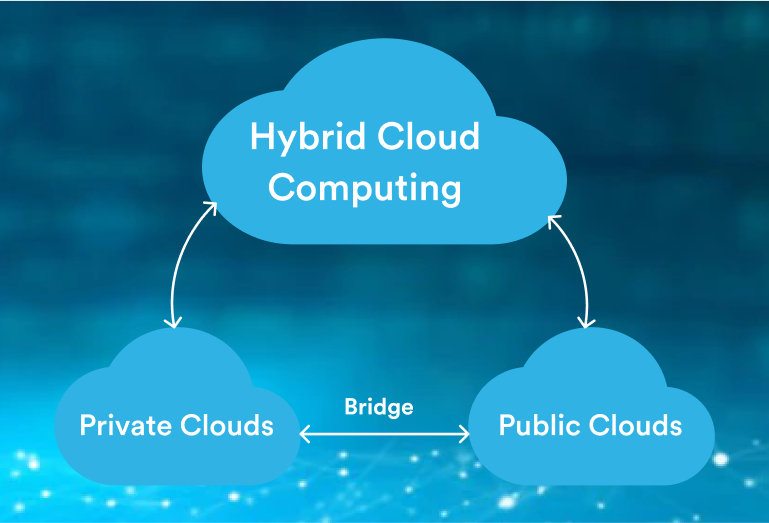In today’s rapidly evolving digital landscape, businesses are increasingly turning to hybrid cloud networking as a means to optimize their IT infrastructure. Hybrid cloud networks combine the flexibility of public clouds with the control and security of private clouds, offering a versatile solution that can be tailored to meet specific organizational needs.
Maximizing efficiency through hybrid cloud networking is critical, as companies strive to reduce costs, improve performance, and ensure seamless integration between on-premises and cloud-based resources. By strategically leveraging hybrid cloud networking, organizations can achieve optimal resource allocation, enhanced scalability, and improved overall network performance, all while maintaining robust security measures.
Benefits of Hybrid Cloud Networking

Hybrid cloud networking offers a range of benefits that can significantly enhance the efficiency and effectiveness of an organization’s IT infrastructure.
- Flexibility and Scalability: Hybrid cloud networking enables businesses to scale resources up or down depending on demand. Organizations can leverage the public cloud to handle fluctuating workloads while maintaining critical applications and sensitive data in a private cloud, offering the perfect balance of flexibility and control.
- Cost Efficiency and Resource Optimization: Hybrid cloud networking allows organizations to optimize their resources by shifting non-sensitive workloads to the public cloud, reducing the need for costly on-premises hardware. This pay-as-you-go model of public cloud services can lead to significant cost savings, while businesses can still maintain higher performance for their private cloud-based systems.
- Enhanced Performance and Reliability: By utilizing a hybrid cloud approach, businesses can ensure continuous availability of critical services. With the ability to balance workloads between on-premises systems and the cloud, companies can avoid network congestion, improve response times, and provide better user experiences. In addition, hybrid cloud environments provide built-in redundancy, enhancing reliability and reducing downtime.
These key benefits contribute to a more efficient and resilient IT infrastructure, positioning businesses to thrive in a cloud-driven world.
Key Strategies for Maximizing Efficiency

To truly harness the potential of hybrid cloud networking, businesses must implement strategic practices that streamline operations, optimize resources, and improve overall network performance. Here are some key strategies for maximizing efficiency:
- Effective Resource Allocation Across Public and Private Clouds: One of the primary advantages of a hybrid cloud network is the ability to distribute workloads across both public and private clouds. By carefully assessing the sensitivity and criticality of different workloads, businesses can allocate less-sensitive tasks to the public cloud and more critical applications to the private cloud. This strategic distribution ensures that resources are used optimally, helping organizations avoid overburdening either environment.
- Automation and Orchestration Tools: Leveraging automation tools and orchestration platforms is key to enhancing efficiency. These tools help streamline the deployment, management, and scaling of workloads across both clouds. Automating routine tasks, such as provisioning resources or adjusting network configurations, frees up IT teams to focus on more strategic activities, reducing the chances of errors and improving overall productivity.
- Use of Multi-Cloud Environments: Multi-cloud strategies allow businesses to avoid dependency on a single cloud provider, which can lead to bottlenecks or service disruptions. By strategically using services from multiple providers, companies can ensure higher availability, better redundancy, and access to best-of-breed services that meet their specific needs. This also enables businesses to take advantage of regional differences in pricing, performance, and regulatory compliance.
Optimizing Data Flow and Connectivity
Efficient data flow and seamless connectivity between on-premises systems and cloud environments are crucial to maximizing hybrid cloud performance. Optimizing these aspects ensures smooth data movement without delays or bottlenecks, enhancing operational efficiency.
Leveraging Software-Defined Wide Area Networking (SD-WAN) optimizes network performance by intelligently routing traffic based on congestion or performance. This helps improve bandwidth utilization, reduce latency, and prioritize critical applications, ensuring seamless data flow between systems and cloud resources.
Maintaining reliable connectivity between private and public clouds, and on-premises infrastructure is vital. Implementing real-time data synchronization, load balancing, and high-availability solutions like dedicated high-bandwidth connections or Virtual Private Networks (VPNs) ensures secure, uninterrupted communication across the network.
Optimizing data traffic with techniques like compression, caching, and prioritization reduces delays and costs, ensuring business applications run smoothly. By focusing on these strategies, organizations can maximize hybrid cloud efficiency and improve resource utilization across environments.
Security Considerations for Efficiency
While optimizing efficiency is crucial, maintaining strong security measures in a hybrid cloud network is equally important. Striking the right balance between security and performance allows businesses to fully leverage hybrid cloud benefits without compromising data protection or compliance.
Security protocols like encryption, identity and access management (IAM), and multi-factor authentication (MFA) are essential for protecting sensitive data. These measures should be implemented in a way that doesn’t impede network performance. Automated security policies and real-time threat detection can provide strong protection without causing delays or slowdowns.
Encryption, both in transit and at rest, is critical to safeguarding data. Businesses should use solutions like hardware-accelerated encryption to minimize performance impact while ensuring secure data transmission.
Continuous monitoring of the hybrid cloud network helps detect vulnerabilities and meet compliance standards like GDPR or HIPAA. By addressing security concerns, businesses can ensure hybrid cloud networks remain both efficient and secure.
Conclusion

Maximizing efficiency with hybrid cloud networking is a strategic move that offers businesses unparalleled flexibility, scalability, and cost optimization. By leveraging the best features of both public and private cloud environments, organizations can allocate resources more effectively, streamline operations through automation, and enhance performance across their entire IT infrastructure.
However, achieving this efficiency requires careful planning—specifically in terms of resource allocation, data flow optimization, and security measures.
As the hybrid cloud landscape continues to evolve, businesses that adopt a proactive approach and utilize the latest tools and strategies will be well-positioned to stay ahead of the competition.
The future of hybrid cloud networking promises even greater opportunities for innovation, offering businesses the ability to not only maximize their current infrastructure but also scale and adapt to future needs in a dynamic digital environment.
Related Posts:
- Top 5 Benefits of the Hybrid Cloud for Businesses
- Data Center Networking 101: Everything You Need to Know
- How To Solve Windows Did Not Detect Any Networking Hardware
- Why Modern Desk Designs Optimize Your Workspace for…
- 10 Marketing Tips to Boost Your Law Firm's Efficiency
- How Can DevOps Take Advantage of AI? Boosting…








